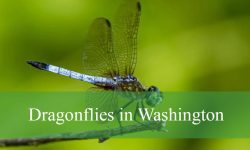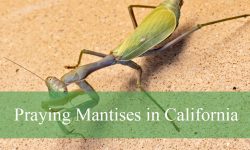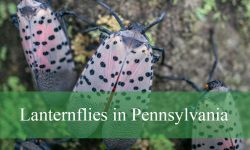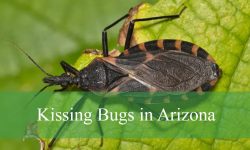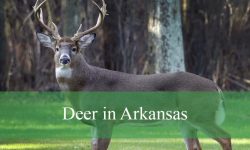Alaska is often associated with towering mountains, pristine wilderness, and untamed wildlife—but few creatures capture the imagination quite like the bald eagle. With its piercing eyes, powerful wingspan, and unmistakable white head, this bird has long been a symbol of strength and freedom. In Alaska, bald eagles aren’t just a symbol—they’re a part of everyday life.
From icy coastlines to salmon-rich rivers, Alaska provides the perfect habitat for these birds to flourish in numbers unseen anywhere else in the United States. Yet despite their fame, bald eagles in Alaska still carry with them many secrets that most people don’t know. Behind their majestic appearance lies a fascinating world shaped by climate, geography, and cultural meaning.
This article uncovers seven of the most surprising and little-known facts about bald eagles in Alaska. Whether you’re a bird lover, a nature traveler, or just curious about America’s national bird, these insights will deepen your appreciation for one of the most iconic residents of the Last Frontier.
The Unbelievable Number of Bald Eagles That Call Alaska Home
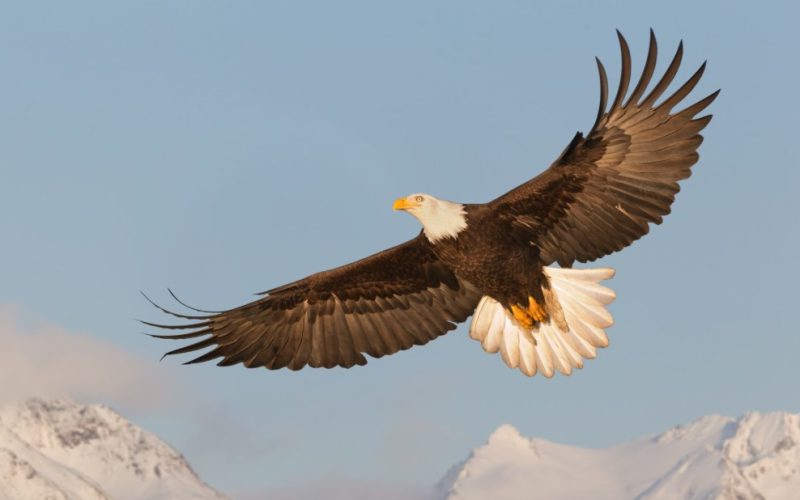
Alaska is home to the largest population of bald eagles in the United States. This vast and rugged state hosts more than 30,000 of these majestic raptors, a number that surpasses any other state by far. The sheer abundance of bald eagles in Alaska often surprises even seasoned birdwatchers. From the remote islands of the Aleutian chain to the rocky fjords of the Southeast, the presence of these birds is unmistakable. They soar over tidewaters, perch on spruce trees, and nest along rugged cliffs and riverbanks.
What makes Alaska so suitable for bald eagles is its diverse and healthy ecosystem. The availability of food sources like salmon, herring, and other fish species plays a critical role in supporting large eagle populations. In particular, the annual salmon runs attract an enormous number of bald eagles to rivers and coastal regions, offering a seasonal feeding frenzy that’s unlike anything seen in the lower 48 states. Alaska’s clean waters, minimal human interference, and vast nesting habitats make it the perfect stronghold for this iconic bird.
Interestingly, bald eagles are not just abundant—they’re also remarkably visible. In towns like Haines and Homer, eagles perch on streetlights, fly overhead in large numbers, and even gather by the hundreds in late fall and winter months. The sight of dozens of bald eagles in one tree or circling over fishing boats is a powerful visual that highlights how integrated these birds are into Alaska’s wild identity.
Alaska’s Winter Eagle Gatherings Are Among the Largest in the World
While most people associate birds with warmer seasons, bald eagles in Alaska have a unique pattern that sets them apart. In places like Haines, the annual Alaska Bald Eagle Festival celebrates one of the largest winter gatherings of bald eagles anywhere on the planet. Each November, thousands of bald eagles flock to the Chilkat Bald Eagle Preserve near Haines to feast on late-running salmon.
What makes this congregation so impressive is the sheer number of eagles in one place. At its peak, over 3,000 bald eagles have been counted within a few miles of riverbank. The behavior stems from the fact that the Chilkat River has warm springs that prevent the water from freezing. These open channels allow salmon to continue swimming late into the season, offering food for eagles long after other rivers have iced over.
This spectacle attracts not only birds but also people from around the globe. Photographers, scientists, and nature enthusiasts come to witness this rare natural event. The eagles become more vocal and competitive, diving, calling, and jostling for position as they feast on carcasses left on gravel bars. The energy and movement during these gatherings showcase the adaptability of bald eagles and their reliance on Alaska’s unique natural rhythms.
Bald Eagles in Alaska Can Have Some of the Largest Nests in the World
One of the more surprising facts about Alaskan bald eagles is the size and longevity of their nests. These birds build massive structures made of sticks, moss, and other materials—some of which weigh over a ton and have been used for decades. In the remote forests and coastal cliffs of Alaska, undisturbed nesting sites give eagles the freedom to return to the same nest year after year, continually expanding it.
These enormous nests are often placed high in spruce or cottonwood trees, though in treeless regions of Alaska, bald eagles may also build their nests on rocky outcrops or cliffs. The structure of the nest reflects the eagle’s commitment to long-term territory and family stability. Pairs mate for life and share in the task of building and maintaining their nest, sometimes growing it to over eight feet wide and several feet deep.
In Alaska’s less-developed areas, these nests are rarely disturbed, allowing them to reach record sizes. Some biologists have even documented nests that had collapsed under their own weight. The fact that eagles are able to live in a territory undisturbed for so long speaks volumes about Alaska’s importance as a conservation stronghold for wildlife.
Alaska’s Bald Eagles Have a Longer Hunting Season Thanks to Salmon Runs
Unlike in many other parts of the country, bald eagles in Alaska benefit from extended access to high-protein meals due to the staggered salmon runs. Different species of salmon migrate up rivers at various times of the year, providing a more prolonged food source than a single summer run. Chinook, sockeye, coho, chum, and pink salmon each have different peak spawning seasons across regions in the state.
Because of this extended feast, bald eagles in Alaska are able to maintain healthier body conditions year-round. Juveniles especially benefit, as they require significant caloric intake to grow and develop their hunting skills. The varied timing of these salmon runs also affects eagle behavior. Eagles may follow the migration patterns of fish from one river system to another, a movement rarely observed in more southern states.
Some rivers in Southeast Alaska, like the Stikine or Taku, offer especially productive hunting grounds. During the peak of the salmon migration, hundreds of eagles can be seen perched in trees along the riverbanks, watching for any opportunity to swoop down and snatch a fish. This natural timing allows eagles to conserve energy during the winter, when food is typically more scarce elsewhere.
Juvenile Bald Eagles in Alaska Stay Brown for Several Years
A lesser-known but fascinating aspect of Alaska’s bald eagle population involves the appearance of juveniles. Young bald eagles do not gain the iconic white head and tail feathers until they are four to five years old. During that time, their plumage is primarily dark brown with white mottling, and they can easily be mistaken for golden eagles or other raptors.
In Alaska, where eagles tend to live longer and face less human-related mortality, juveniles may linger longer in sub-adult stages as they perfect hunting and survival skills. These young eagles are often more visible in summer months when they leave their nests and begin to explore. Because of the abundance of fish and carrion available, many of them survive to adulthood without needing to migrate far south.
Observers often note that juvenile eagles in Alaska seem bolder than those in more urban settings. They are frequently seen testing their skills by swooping at salmon, scavenging near harbors, or challenging older birds for scraps. This phase of life is crucial for building the strength and experience required for breeding success. The contrast between their rough brown plumage and the brilliant white of the adults gives birdwatchers a glimpse into the life stages of these incredible raptors.
Bald Eagles in Alaska Rarely Migrate Out of the State
Contrary to what many people assume, most bald eagles in Alaska do not migrate long distances. While some northern populations may move to coastal areas during extreme winter conditions, the majority of Alaskan eagles remain in the state year-round. The abundance of open water, late salmon runs, and minimal human disturbance make year-round residency not only possible but advantageous.
This year-round presence contrasts sharply with bald eagle behavior in places like the Midwest or Northeast, where frozen rivers and food scarcity force eagles to migrate hundreds or even thousands of miles. In Alaska, warm springs, tidal estuaries, and large lakes provide enough open water for foraging, even in the coldest months. Many eagles move just far enough to find food but remain within the state boundaries.
This limited migration pattern also helps maintain stable territorial dynamics. Mated pairs can return to the same nesting and hunting territories without needing to reestablish dominance or compete with migrants. It also increases the survival rate of juvenile eagles, who don’t have to endure long journeys to find food. Alaska’s environment offers a level of ecological stability that supports permanent eagle populations in a way few other places in North America can match.
Cultural Significance of Bald Eagles to Alaska’s Indigenous Peoples
Beyond their ecological role, bald eagles have deep spiritual and cultural significance for many Indigenous communities throughout Alaska. For centuries, Alaska Natives such as the Tlingit, Haida, and Tsimshian have revered the eagle for its power, grace, and connection to the spirit world. Eagle feathers are considered sacred and are often used in ceremonial regalia, dances, and artwork.
Among the Tlingit people, for example, the eagle is one of two primary moieties or social divisions, the other being the raven. These moieties are central to identity, marriage customs, and traditional storytelling. The eagle moiety is associated with strength, dignity, and leadership. In many clans, eagles are believed to be messengers between the human world and the spirit realm, and their feathers are used in healing and purification rituals.
Today, despite modern challenges, the eagle remains a vital cultural symbol. Indigenous artists continue to carve eagles into totem poles, jewelry, and ceremonial objects. Legal protections ensure that Alaska Natives can obtain eagle feathers through federal programs for use in traditional practices. This relationship between culture and conservation highlights the importance of preserving both natural habitats and Indigenous heritage.
Conclusion: Alaska Is the Ultimate Sanctuary for Bald Eagles
Alaska is more than just a home for bald eagles—it is their stronghold. From staggering winter gatherings and massive nests to their cultural symbolism and minimal migration patterns, these birds embody the wild spirit of the Last Frontier. The secrets of Alaska’s bald eagles reveal a world where nature still dominates, offering sanctuary to one of North America’s most iconic species.
Each hidden truth deepens our appreciation for the bald eagle’s resilience, adaptability, and enduring presence in Alaskan skies. Protecting this bird means protecting the vast ecosystems and cultural legacies it represents. In a world of change, Alaska remains a place where bald eagles not only survive but thrive—soaring high above glacier-fed rivers, snow-capped mountains, and ancient forests.
FAQs About Bald Eagles in Alaska
How many bald eagles live in Alaska?
Alaska is home to an estimated 30,000 bald eagles, making it the state with the largest population in the U.S. They thrive in Alaska’s rich ecosystems, particularly near rivers, coastlines, and areas with abundant fish like salmon and herring.
Do bald eagles migrate out of Alaska in winter?
Most bald eagles in Alaska do not migrate far. Many stay year-round, especially in areas where rivers and coastlines remain ice-free due to geothermal activity or tidal movement. Only some from colder inland regions shift to coastal zones during harsh winters.
Why do so many bald eagles gather in Haines each year?
The annual gathering of bald eagles in Haines is linked to the late salmon run on the Chilkat River, which stays unfrozen due to warm springs. Thousands of eagles arrive in November to feed, making it one of the largest bald eagle congregations in the world.
When do bald eagles get their white heads?
Juvenile bald eagles are mostly brown with mottled white patches and don’t develop the distinctive white head and tail until they are about 4 to 5 years old. Until then, they can easily be mistaken for other large raptors like golden eagles.
Are bald eagle nests really that big in Alaska?
Yes, bald eagle nests in Alaska can grow to enormous sizes. Some weigh over a ton and span more than 8 feet wide. Eagles reuse and rebuild these nests for years, often in trees or cliffs undisturbed by humans.
What do bald eagles in Alaska eat?
Their diet mainly consists of fish—especially salmon—but they also eat birds, small mammals, and carrion. Alaska’s extended salmon runs give them a more consistent food supply than in most other regions.
Are bald eagles important to Indigenous cultures in Alaska?
Absolutely. Many Alaska Native groups, such as the Tlingit and Haida, revere the bald eagle as a spiritual symbol. Feathers are used in ceremonial clothing, dances, and sacred traditions, and the eagle plays a central role in clan identity and stories.


